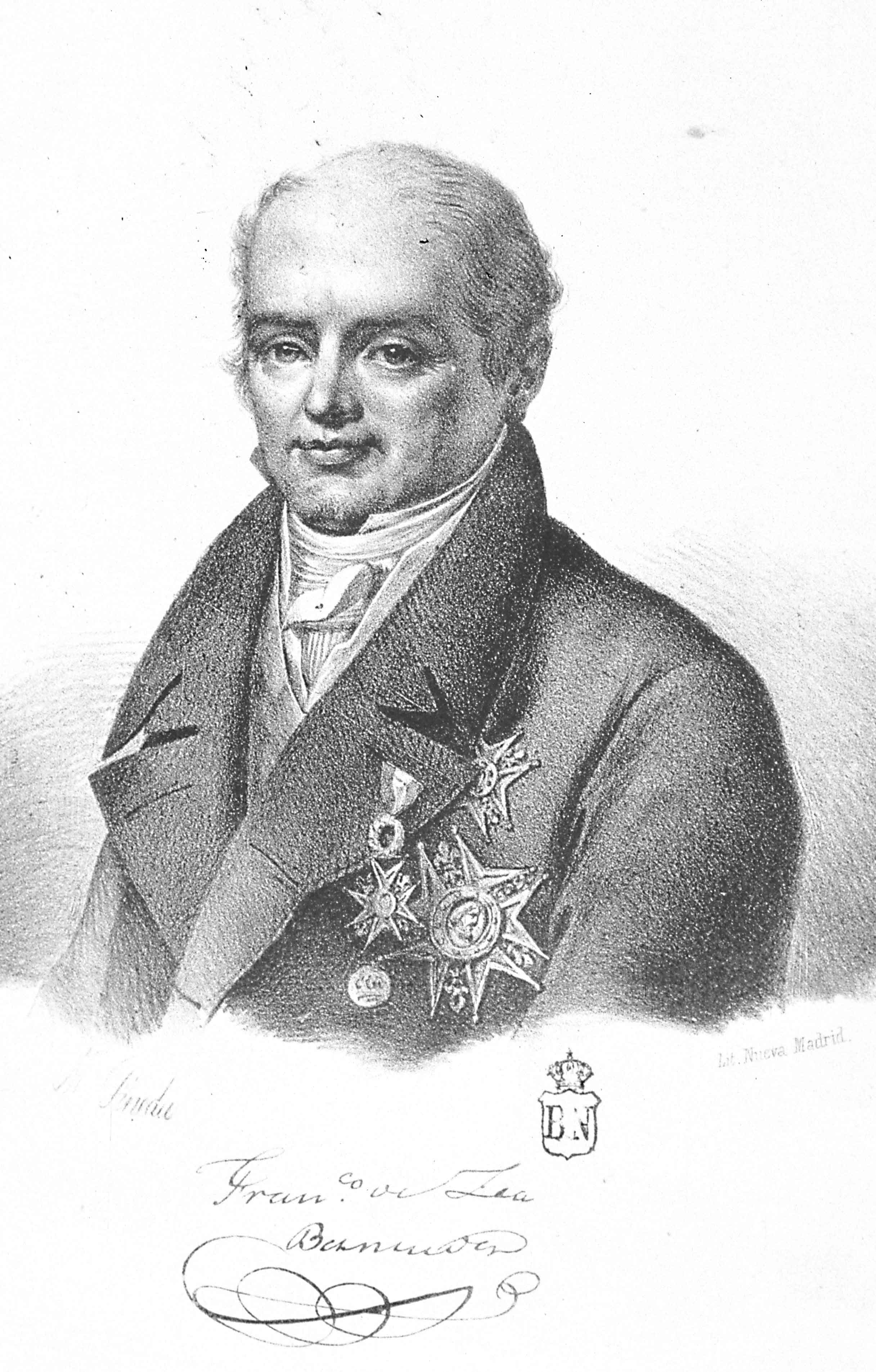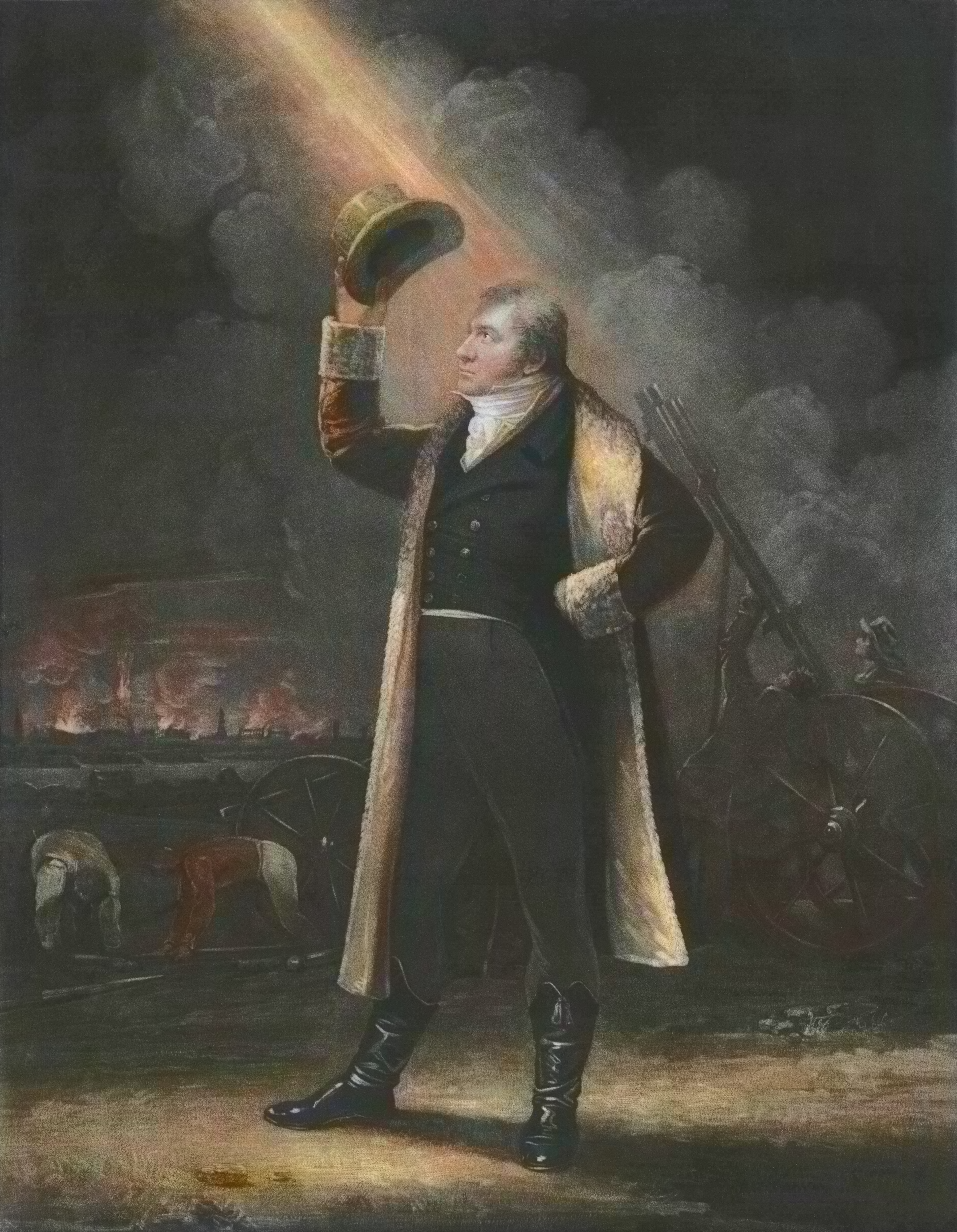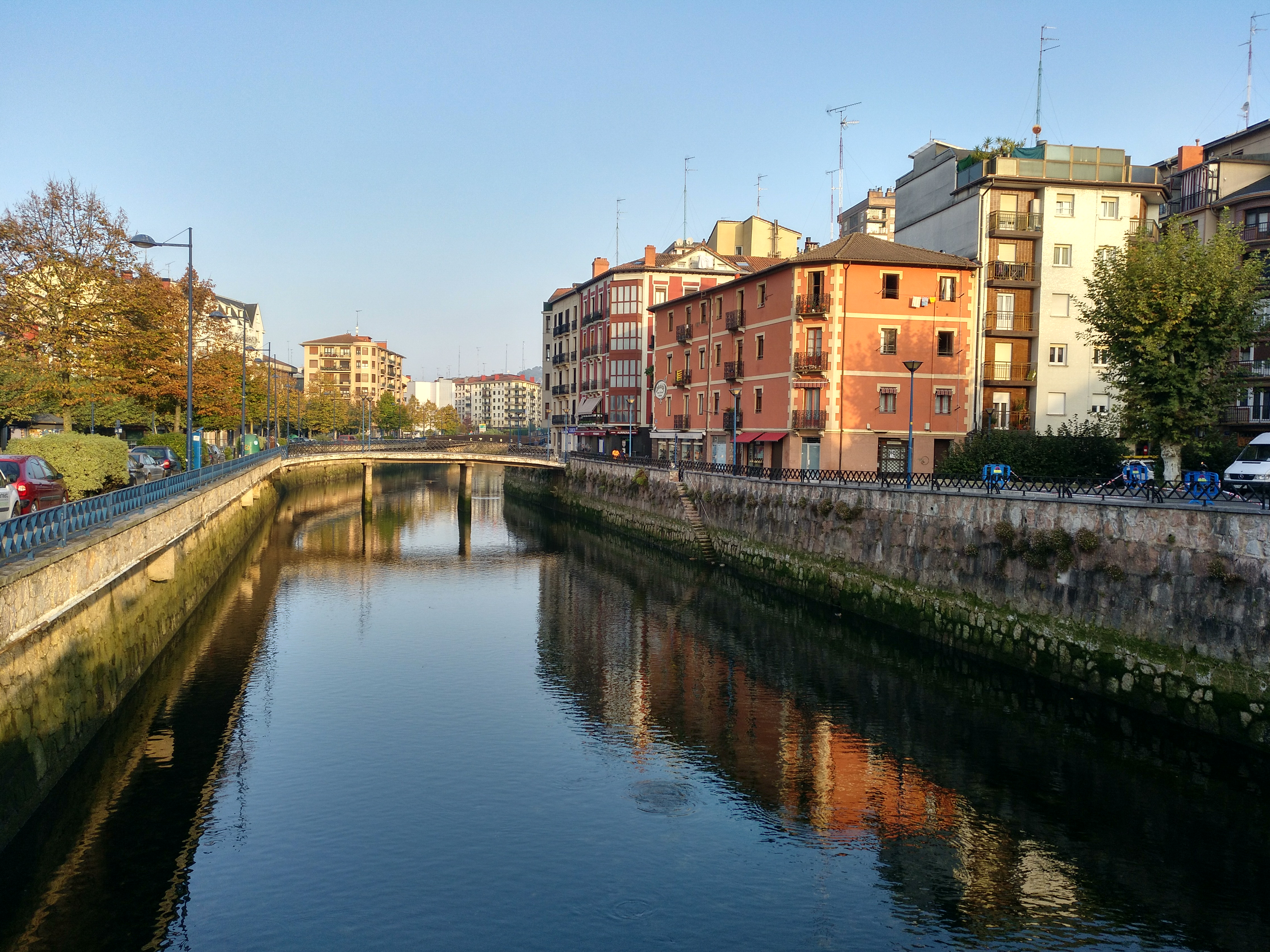|
Battle Of Andoain
The Battle of Andoain (Basque: ''Andoaingo Gudua'') was a battle fought on 14 September 1837, during the First Carlist War in northern Spain. The action took place in Andoain, south of the main Liberal stronghold of San Sebastián. Liberal troops, led by the Spanish General Leopoldo O'Donnell, had captured Andoain on 9 September, driving the Carlist garrison to the western bank of the river Oria. Then followed a three-day period of breastwork building by both sides and sporadic fighting. After two days of trench warfare, the Carlist poured heavy artillery fire on the Liberals lines and launched an all-out offensive by midday supported by reinforcements brought in from Navarra by General José Ignacio de Uranga. The Liberals were flanked on their left wing, and their lines crumbled. Only two British Auxiliary Legion Regiments and a number of their Basque local guides, the Chapelgorris, were left to resist the Carlist advance, but were eventually outnumbered and overran. Most of t ... [...More Info...] [...Related Items...] OR: [Wikipedia] [Google] [Baidu] |
First Carlist War
The First Carlist War was a civil war in Spain from 1833 to 1840, the first of three Carlist Wars. It was fought between two factions over the succession to the throne and the nature of the Spanish monarchy: the conservative and devolutionist supporters of the late king's brother, Carlos de Borbón (or ''Carlos V''), became known as Carlists (''carlistas''), while the progressive and centralist supporters of the regent, Maria Christina, acting for Isabella II of Spain, were called Liberals (''liberales''), ''cristinos'' or ''isabelinos''. It is considered by some authors the largest and most deadly civil war of the period. The Carlist forces were split in three geographically distinct armies: ('North'), and ('Catalonia'), which by and large operated independently from each other. Aside from being a war of succession about the question who the rightful successor to king Ferdinand VII of Spain was, the Carlists’ goal was the return to a traditional monarchy, while the ... [...More Info...] [...Related Items...] OR: [Wikipedia] [Google] [Baidu] |
Infante Carlos, Count Of Molina
''Infante'' (, ; f. ''infanta''), also anglicised as Infant or translated as Prince, is the title and rank given in the Iberian kingdoms of Spain (including the predecessor kingdoms of Aragon, Castile, Navarre, and León) and Portugal to the sons and daughters (''infantas'') of the king, regardless of age, sometimes with the exception of the heir apparent or heir presumptive to the throne who usually bears a unique princely or ducal title.de Badts de Cugnac, Chantal. Coutant de Saisseval, Guy. ''Le Petit Gotha''. Nouvelle Imprimerie Laballery, Paris 2002, p. 303, 364-369, 398, 406, 740-742, 756-758 (French) A woman married to a male ''infante'' was accorded the title of ''infanta'' if the marriage was dynastically approved (e.g., Princess Alicia of Bourbon-Parma), although since 1987 this is no longer automatically the case in Spain (e.g., Princess Anne d'Orléans). Husbands of born ''infantas'' did not obtain the title of ''infante'' through marriage (unlike most heredit ... [...More Info...] [...Related Items...] OR: [Wikipedia] [Google] [Baidu] |
Congreve Rocket
The Congreve rocket was a type of rocket artillery designed by British inventor Sir William Congreve in 1808. The design was based upon the rockets deployed by the Kingdom of Mysore against the East India Company during the Second, Third, and Fourth Anglo-Mysore Wars. Lieutenant general Thomas Desaguliers, colonel commandant of the Royal Artillery at Woolwich, was impressed by reports of their effectiveness, and undertook several unsuccessful experiments to produce his own rocket weapons. Several captured Mysorean rockets were sent to England following the annexation of the Mysorean kingdom into British India following the death of Tipu Sultan in the siege of Seringapatam. The project was continued chiefly with William Congreve, who set up a research and development programme at the Woolwich Arsenal's laboratory. After development work was complete the rockets were manufactured in quantity further north, near Waltham Abbey, Essex. He was told that "the British at Se ... [...More Info...] [...Related Items...] OR: [Wikipedia] [Google] [Baidu] |
Arróniz
Arróniz ( eu, Arroitz) is a town and municipality located in the province and autonomous community of Navarre, northern Spain , image_flag = Bandera de España.svg , image_coat = Escudo de España (mazonado).svg , national_motto = ''Plus ultra'' (Latin)(English: "Further Beyond") , national_anthem = (English: "Royal March") , i .... References External links * ARRONIZ in the Bernardo Estornés Lasa - Auñamendi Encyclopedia (Euskomedia Fundazioa) Official web of the town Municipalities in Navarre {{navarre-geo-stub ... [...More Info...] [...Related Items...] OR: [Wikipedia] [Google] [Baidu] |
British Legion At Vitoria (1837)
British may refer to: Peoples, culture, and language * British people, nationals or natives of the United Kingdom, British Overseas Territories, and Crown Dependencies. ** Britishness, the British identity and common culture * British English, the English language as spoken and written in the United Kingdom or, more broadly, throughout the British Isles * Celtic Britons, an ancient ethno-linguistic group * Brittonic languages, a branch of the Insular Celtic language family (formerly called British) ** Common Brittonic, an ancient language Other uses *''Brit(ish)'', a 2018 memoir by Afua Hirsch *People or things associated with: ** Great Britain, an island ** United Kingdom, a sovereign state ** Kingdom of Great Britain (1707–1800) ** United Kingdom of Great Britain and Ireland (1801–1922) See also * Terminology of the British Isles * Alternative names for the British * English (other) * Britannic (other) * British Isles * Brit (other) * Briton (d ... [...More Info...] [...Related Items...] OR: [Wikipedia] [Google] [Baidu] |
Royal Artillery
The Royal Regiment of Artillery, commonly referred to as the Royal Artillery (RA) and colloquially known as "The Gunners", is one of two regiments that make up the artillery arm of the British Army. The Royal Regiment of Artillery comprises thirteen Regular Army regiments, the King's Troop Royal Horse Artillery and five Army Reserve regiments. History Formation to 1799 Artillery was used by the English army as early as the Battle of Crécy in 1346, while Henry VIII established it as a semi-permanent function in the 16th century. Until the early 18th century, the majority of British regiments were raised for specific campaigns and disbanded on completion. An exception were gunners based at the Tower of London, Portsmouth and other forts around Britain, who were controlled by the Ordnance Office and stored and maintained equipment and provided personnel for field artillery 'traynes' that were organised as needed. These personnel, responsible in peacetime for maintaining the ... [...More Info...] [...Related Items...] OR: [Wikipedia] [Google] [Baidu] |
Royal Marines
The Corps of Royal Marines (RM), also known as the Royal Marines Commandos, are the UK's special operations capable commando force, amphibious warfare, amphibious light infantry and also one of the :Fighting Arms of the Royal Navy, five fighting arms of the Royal Navy. The Corps of Royal Marines can trace their origins back to the formation of the "Duke of York and Albany's maritime regiment of Foot" on 28 October 1664, and can trace their commando origins to the formation of the 3rd Special Service Brigade, now known as 3 Commando Brigade on 14 February 1942, during the Second World War. As a specialised and adaptable light infantry and commando force, Royal Marine Commandos are trained for rapid deployment worldwide and capable of dealing with a wide range of threats. The Corps of Royal Marines is organised into 3 Commando Brigade and a number of separate units, including 47 Commando (Raiding Group) Royal Marines, and a company-strength commitment to the Special Forces Suppor ... [...More Info...] [...Related Items...] OR: [Wikipedia] [Google] [Baidu] |
Guipuzcoa
Gipuzkoa (, , ; es, Guipúzcoa ; french: Guipuscoa) is a province of Spain and a historical territory of the autonomous community of the Basque Country. Its capital city is Donostia-San Sebastián. Gipuzkoa shares borders with the French department of Pyrénées-Atlantiques at the northeast, with the province and autonomous community of Navarre at east, Biscay at west, Álava at southwest and the Bay of Biscay to its north. It is located at the easternmost extreme of the Cantabric Sea, in the Bay of Biscay. It has of coast land. With a total area of , Gipuzkoa is the smallest province of Spain. The province has 89 municipalities and a population of 720,592 inhabitants (2018), from which more than half live in the Donostia-San Sebastián metropolitan area. Apart from the capital, other important cities are Irun, Errenteria, Zarautz, Mondragón, Eibar, Hondarribia, Oñati, Tolosa, Beasain and Pasaia. The oceanic climate gives the province an intense green colour with little ... [...More Info...] [...Related Items...] OR: [Wikipedia] [Google] [Baidu] |
Tolosa, Spain
Tolosa (Spanish and Basque: ) is a town and municipality in the Basque province of Gipuzkoa, in northern Spain. It is located in the valley of the river Oria, next by Uzturre, a local mountain topped by a white cross. Its economy relies primarily on the industrial sector, specifically papermaking. Geography Neighbourhoods Iurre, Berazubi, Bidebieta, San Esteban, Izaskun, San Blas, Amarotz, Usabal, Santa Lutzia, Montezkue, Belate, Belabieta, Alde Zaharra (Parte Vieja), Auzo Txikia, Alliri, Arramele, Iparragirre, Urkizu, Aldaba, Larramendi, Aldaba Txiki and Bedaio. Notable buildings * Provincial archive of Gipuzkoa, built in 1904 by the architect Cortázar, was one of the first to be built in concrete in the province. From the sixteenth century, Tolosa was home to the provincial archives, formerly located in the parish. * Town Hall, built between 1657 and 1672, Baroque style, with a ground floor portico and wrought iron balconies. Work of the master stonecutter Juan de Arbu ... [...More Info...] [...Related Items...] OR: [Wikipedia] [Google] [Baidu] |
Leitzaran
The Leitzaran (, or Leizarán in Spanish) is a river and a valley in the Navarre and the Basque Country (Spain). It flows into the river Oria from its right. Its source is in the Leitza municipality in Navarre, and it is long. It enters into Gipuzkoa in a place called Urto. It takes water from the municipalities of Areso, Berastegi, Elduain, Villabona, Urnieta and Andoain and has an area of , of which belongs to Gipuzkoa. Valle de Leizaran The Gipuzkoan part of its basin is known as "Valle de Leizaran" (Leitzaran Valley, while the very name Leitzaran means 'the Leitza valley' in Basque), and it mostly shapes up in the "Macizo de Cinco Villas", formed by materials formed in the Paleozoic (concretely in the Carboniferous), mostly slate and sandstone, fold during the Hercynian orogeny. The Leitzaran is very crooked and shows several meanders. The gipuscoan Leitzaran is bounded in the east by the river Urumea’s valley, divided by the Adarra- Mandoegi mountain chain. A ... [...More Info...] [...Related Items...] OR: [Wikipedia] [Google] [Baidu] |
Urnieta
Urnieta is a town located in the province of Gipuzkoa, in the Autonomous Community of Basque Country, northern Spain. References External links Official WebsiteInformation available in Spanish and Basque. URNIETA in the Bernardo Estornés Lasa - Auñamendi Encyclopedia (Euskomedia Fundazioa)Information available in Spanish Spanish might refer to: * Items from or related to Spain: **Spaniards are a nation and ethnic group indigenous to Spain **Spanish language, spoken in Spain and many Latin American countries **Spanish cuisine Other places * Spanish, Ontario, Can ... Municipalities in Gipuzkoa {{Basque-geo-stub ... [...More Info...] [...Related Items...] OR: [Wikipedia] [Google] [Baidu] |
Irun
Irun ( es, Irún, eu, Irun) is a town of the Bidasoaldea region in the province of Gipuzkoa in the Basque Autonomous Community, Spain. History It lies on the foundations of the ancient Oiasso, cited as a Roman-Vasconic town. During the Spanish Civil War, the city was site of the 1936 Battle of Irun, which ended with a strategic victory for the Nationalist forces. Location and transport One of the biggest towns in Gipuzkoa, its location on the border between Spain and France, across the Bidasoa river from Hendaye), has made Irun into a commercial and logistic centre. Irun railway station is a major break-of-gauge where the SNCF rails meet the broad gauge Renfe ones. Currently Irun has a fairground with a modern exhibition and telecommunication facilities, just some 100 metres away from the actual border at the Santiago Bridge (river Bidasoa). Irun is part of the conurbation of Txingudi bay with Hondarribia and Hendaye; the town is also within the area of the Eurocité ... [...More Info...] [...Related Items...] OR: [Wikipedia] [Google] [Baidu] |
.jpg)


